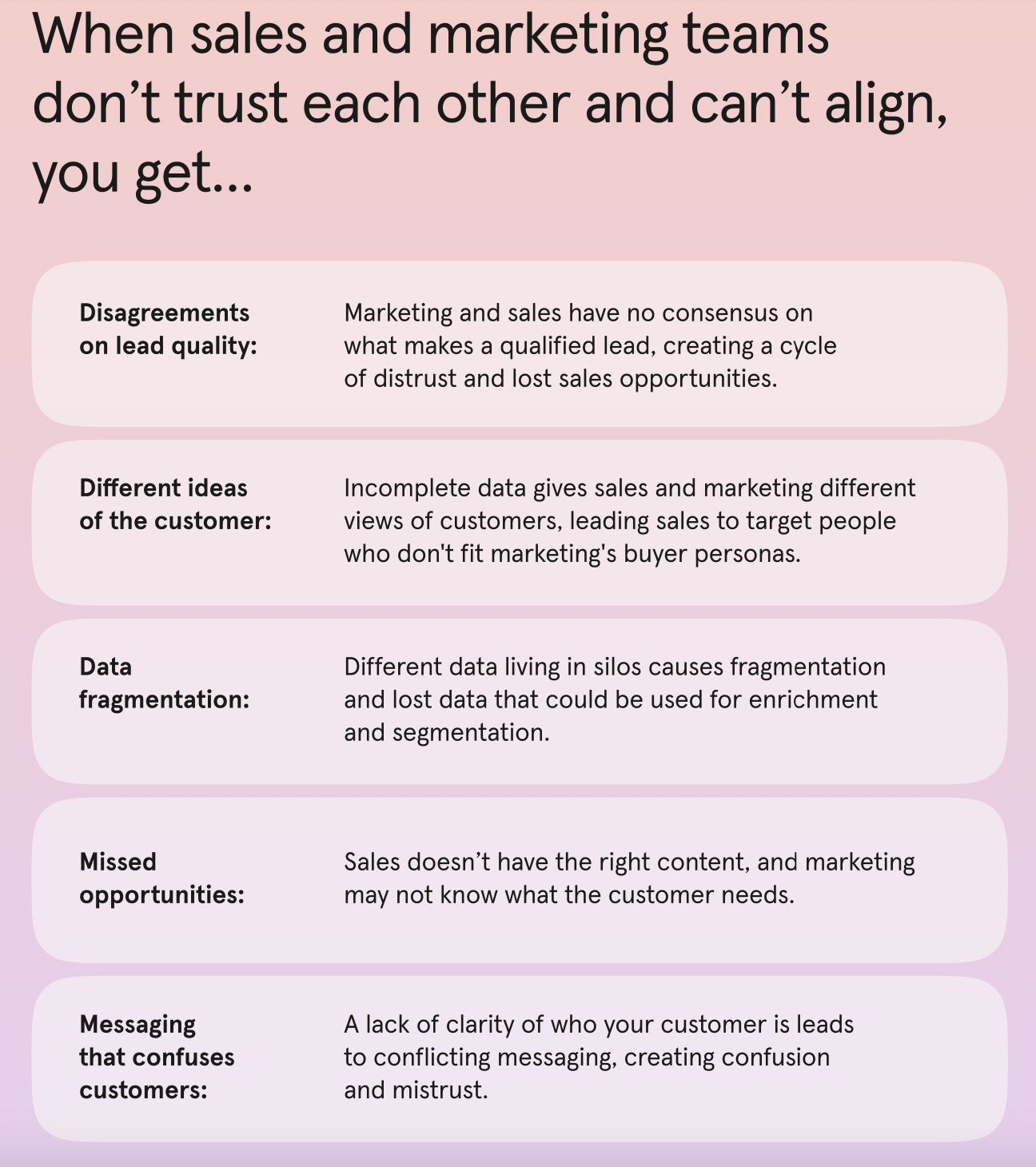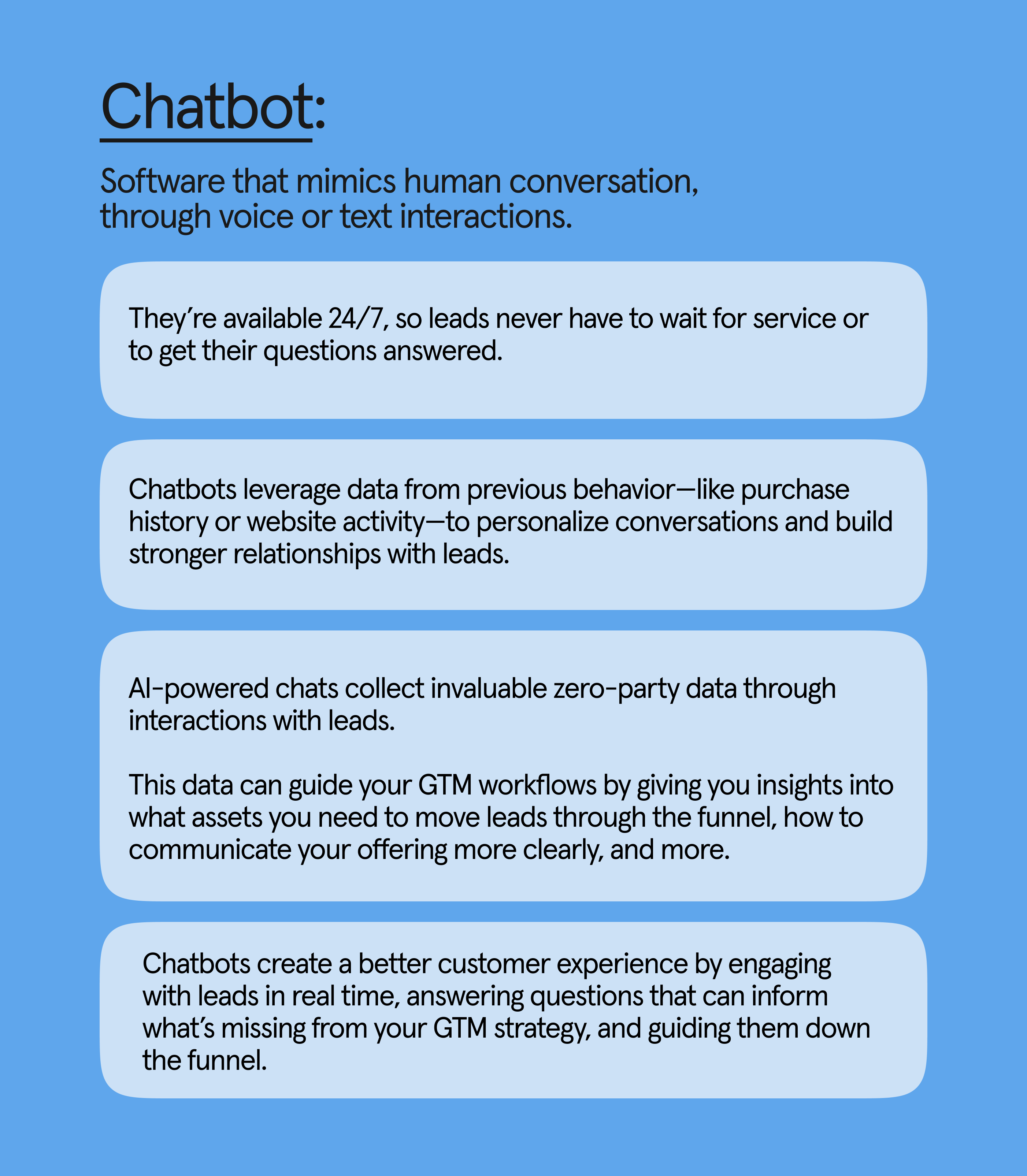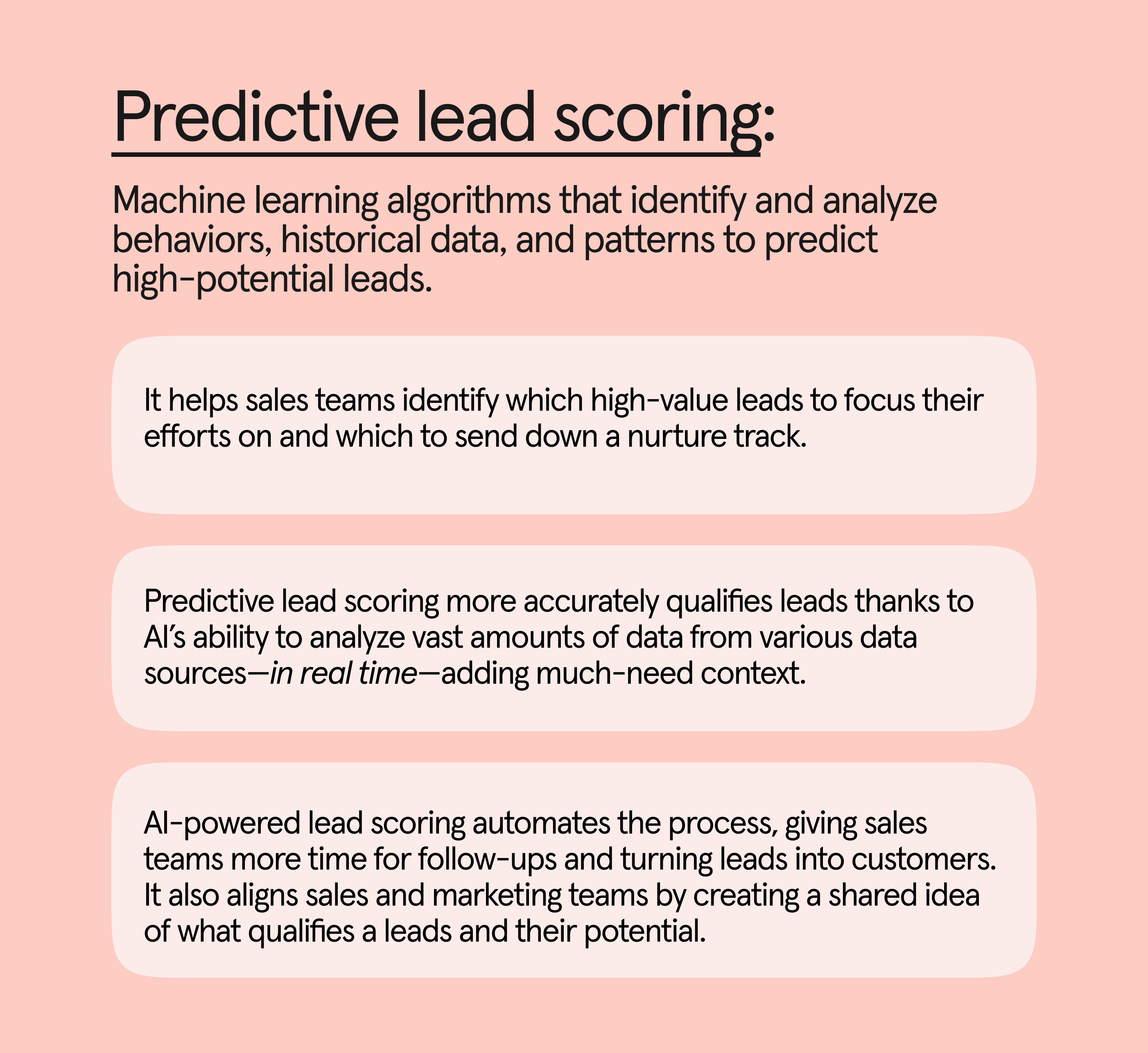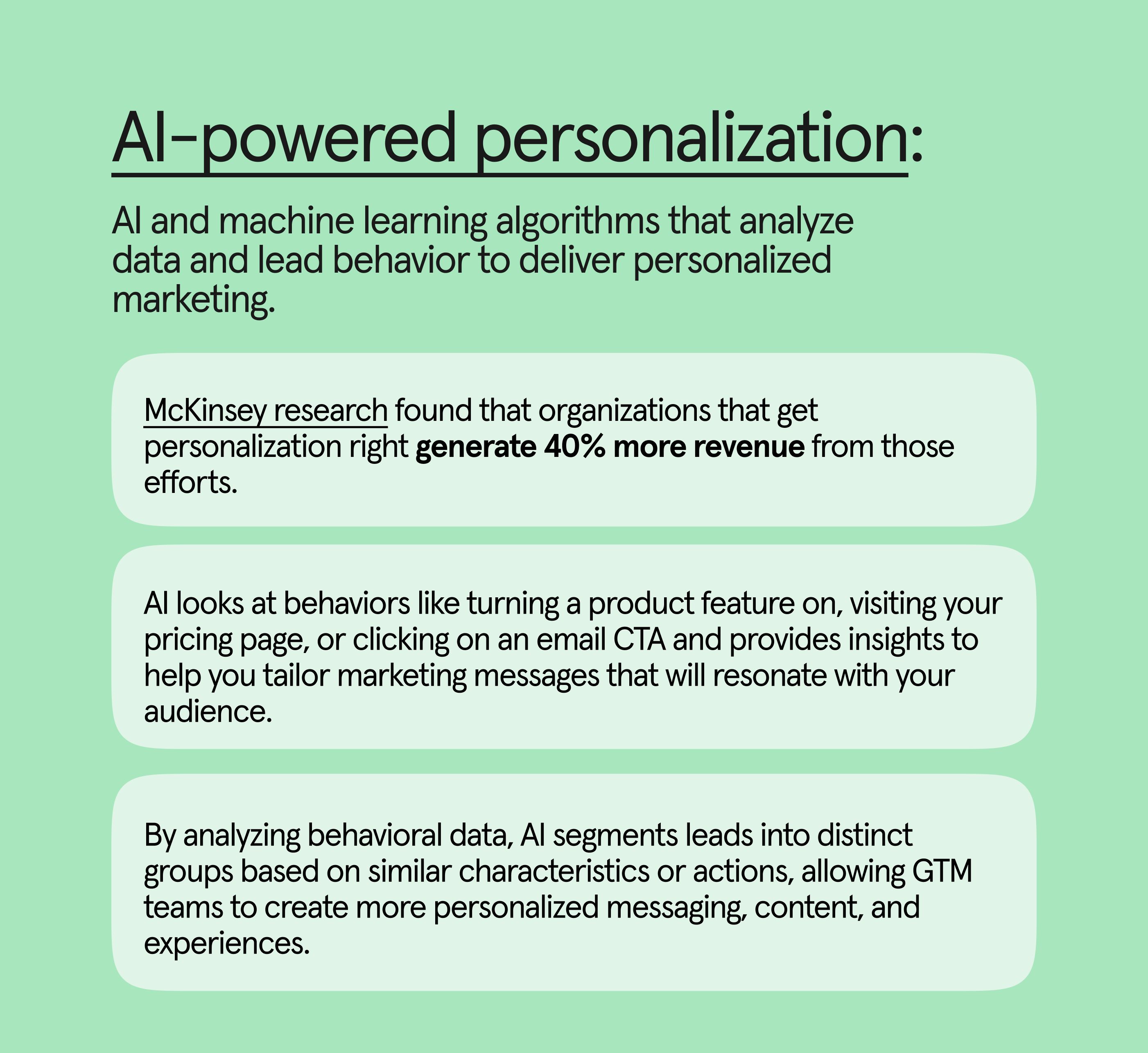Opinions and Expertise
GTM, meet AI—the benefits of using AI to optimize GTM strategies
As AI continues to evolve, it’s changing how we work—for the better. Savvy GTM teams are leveraging AI to create more effective marketing, from personalization to targeting to lead scoring. See how you can, too.

Launching your first—or hundredth—product? Exciting, right?
You’ve conducted customer research, analyzed the competition, and developed a new product that solves a legitimate pain point. Next up…getting that product in front of the right people at the right time, with the right messaging—aka launching the damn thing.
But as you work alongside sales, marketing, product, and other teams, you’ve hit a roadblock. No one’s aligned on who your target audience is, what matters to them, and what messaging will encourage conversions—it’s a mess. Misalignment stalls your launch as you try to figure everything out.
Let' s imagine another scenario, one where you leverage the power of artificial intelligence (AI) to get everyone on the same page and your go-to-market (GTM) workflows back on track.
Let’s explore how you can use AI to improve your GTM workflows (and even convert more leads into customers).
Misalignment and broken GTM workflows
Launching a GTM strategy is a team effort. Everyone from marketing and sales to product works together to target the right audience at the right time, with the right message. Or that' s how it' s supposed to work.
But the reality is that sales and marketing have never been more misaligned, from disagreements on what defines a quality lead to what' s more important—lead generation or closing deals. This misalignment is disrupting GTM workflows and thwarting successful product launches.
Here' s how:
- Instead of focusing on the right audience to target, sales pours their efforts into what they consider qualified leads while marketing focuses on a different audience entirely. The result? No organized efforts and no clearly defined audience to prioritize.
- Marketing and sales create data silos that prevent them from sharing valuable customer data, making the data they do have far less effective. These silos lead to an incomplete understanding of customers and missed opportunities.
- When sales and marketing have different—or incomplete—ideas of who your customers are, the messaging gets muddied. And your customers likely hear different things depending on whether they engage with marketing content or talk to sales.
All of this leads to less effective marketing and sales efforts that can ground your launch before it even gets started. Without aligned GTM workflows, you miss out on high-value leads, growth, and increased revenue.
GTM, meet AI
From chatbots that automate surface-level customer service to (questionable) content creation to automating the mundane tasks of our day-to-day—AI has forever changed work:
- There are AI marketing tools that analyze and extract insights from data
- AI for sales teams automates outreach
- Predictive analytics that help leaders reduce risk and make better decisions
But what about the benefits of using AI to optimize GTM strategies? With so many applications, savvy organizations are using AI to improve their GTM workflows. How? Using AI to help them launch products successfully and get their teams on the same page (leveraging data).
The role of AI in optimizing GTM strategies
Though AI has been around for a while, it’s not until recently that organizations have fully embraced it—including GTM teams.
There' s even misalignment between sales and marketing when it comes to AI. Aptitude 8 and Ascend2' s 2023 joint survey of GTM leaders revealed that marketing teams use AI more than any other department on the GTM team while sales use it the least.
So it' s not surprising that strengthening marketing, sales, and customer success alignment is the top priority for more than half of GTM leaders surveyed. AI just might be the answer to achieving that goal. Why? Because businesses that properly leverage AI gain key insights that make marketing more effective and help sales close more deals.
Building a bridge between GTM departments (we’re looking at you, sales and marketing)
Whether you work in marketing or sales, you both identify high-value leads based on their actions. When teams aren’t in lockstep that data gets siloed and you' re back to square one.
But customer data platforms (CDPs) let you democratize data so anyone—and everyone—can access the same data, so there are no more misunderstandings about who your customers are.
Some CDPs use AI to pull data from multiple sources (and across different GTM departments) and clean, enrich, and analyze it—automatically. This removes the manual process of removing duplicate data, unifying data from different GTM teams in your CDP, and verifying the accuracy of your data.
Let' s say a lead registers for your webinar with their work email address but then subscribes to your newsletter with their personal email address. AI can identify these as the same lead and merge the data so you can more accurately qualify the lead.
So instead of data silos that prevent true customer understanding (perpetuating poor GTM workflows), you get clean, accurate, and enriched data that your entire GTM team can access. And when everyone is viewing the same data, it results in:
- Clear, consistent messaging
- The full picture of your leads and customers
- More accurate segmentation
- Better personalization
Identifying patterns in customer data for more effective GTM workflows
You already know—if you don' t understand your customers and what motivates them, you' ll have irrelevant messaging and inaccurate targeting.
That' s why customer data is so important. It tells a story about your customers that you can use to improve everything from the customer journey to your GTM workflows. And AI can help.
By identifying patterns in customer data and extracting insights, AI gives you an enhanced understanding of your audience, better segmenting abilities, and more personalized messaging.
An enhanced understanding of your audience
AI analyzes customer behavior and quickly identifies patterns that give you insights into purchase history, social activity, and more. AI can process mass amounts of data and pull insights fast. This makes it easy to update customer profiles in real time based on behavioral data and preferences that paint a clear picture of your customers.
Better segmentation and targeting
According to Aptitude 8 and Ascend2' s survey, more than 40% of GTM leaders agree that target audience segmentation would be the most beneficial area for their teams to improve on. AI and machine learning (ML) use customer data and behavioral data to group customers (segments), allowing you to more accurately target the right people.
More personalized messaging
Once you know your audience and have segmented them properly, tailored messaging should be easier, especially with AI in your back pocket. It unifies data sources and analyzes that data to create personalized messaging. Just look at Netflix—AI analyzes your ratings and viewing habits to curate personalized recommendations.
These all help to convert high-value leads (and help you make smarter, data-informed decisions).
Meet Typeform for Growth
We know—AI' s ability to do the heavy lifting of analyzing data and applying insights to improve your GTM workflows is incredible. But what' s better? AI marketing tools that collect and help you enrich that vital customer data.
Well, Typeform for Growth is that tool. Combining the power of zero-party data (ZPD), data enrichment, and the best of AI, Typeform for Growth helps you capture, qualify, and covert leads to help you grow.
Typeform for Growth helps you collect high-quality data straight from your customers (ZPD) and then uncovers deep insights quickly with AI-generated dashboards that find patterns and provide a high-level overview of your data. The best part? You can enrich email addresses you' ve collected from your forms with third-party data to get a complete picture of every lead.
Using all that data, Typeform for Growth automatically scores and routes leads, allowing you to personalize follow-ups for your high-value leads.
GTM teams can leverage Typeform for Growth to understand their audience, personalize messaging, score and prioritize leads, and more.
AI marketing tools to improve your GTM workflows
There are dozens of AI tools to automate processes, create a better customer experience, and—you guessed it—improve your GTM workflows. Take a look at a few AI marketing tools that engage with leads, analyze behavior to more accurately score leads, and help tailor marketing messages.
Chatbots
You know those little pop-ups in the bottom corner of nearly every website these days that offer to chat with you? Those are chatbots—and they’re powerful tools for creating a better customer experience and giving you insights into what’s missing from your GTM strategy.
Predictive lead scoring
Let’s say Alex, a potential customer, has attended a few of your webinars, downloaded an ebook, subscribed to your email newsletter, and visited your pricing page. Drew only read a few of your blog posts. So, who’s the more qualified lead?
That’s what lead scoring does—it tells you where to focus your efforts based on which leads are more likely to convert based on historical and behavioral data. It can be a laborious process… unless you use AI to identify patterns, automate scoring, and leverage insights to predict which are the high-value leads.
AI-powered personalization
" Personalization" has become synonymous with creating a stellar customer experience. Customers don' t want you sending them irrelevant offers, wasting their time with generic marketing, or turning customer support into a nightmare because you don' t have all their information.
They expect everything to be tailored to them. And with a little help from AI, you can deliver that personalization.
AI and lead conversion
Whether it' s automating your lead scoring process or helping you target the right people with the right message, AI is doing the behind-the-scenes work to help you convert high-value leads into long-term customers.
By analyzing mountains of data fast, AI identifies patterns that let you do everything necessary to convert leads, like showing you which leads to prioritize or segmenting your audience for more personalized marketing. AI even helps you target the right people in your audience and get your sales and marketing teams aligned on lead quality.
When harnessed properly, AI can enhance your sales and marketing processes to create more effective GTM workflows and, ultimately, help you grow your revenue.
And if you need a powerful tool to help analyze and enrich data, score leads, and automate personalization (so you can close more deals), try Typeform for Growth.
Combining the power of AI, data, and automation, Typeform for Growth helps businesses automate lead scoring, personalize messaging, prioritize high-value leads, and close more deals.






.png)
.png)